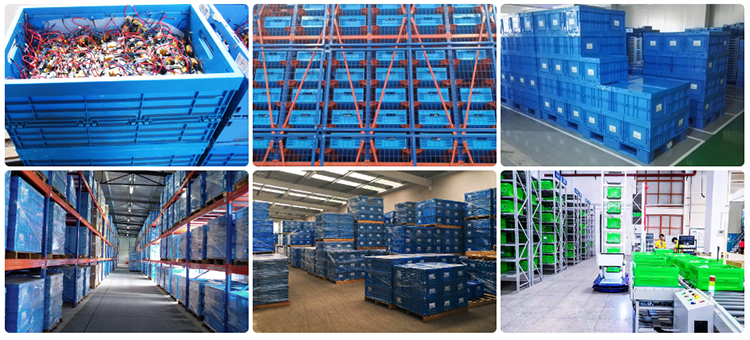In logistics warehousing and cargo turnover scenarios, container selection directly impacts costs and efficiency. As common options, plastic crates and traditional wooden crates differ significantly in durability, economy, space utilization, and more. Understanding these differences helps businesses avoid wrong choices.
First, durability and maintenance costs. Traditional wooden crates are sensitive to temperature and humidity—they mold when damp and crack when dry. After one use, they often need repairs (e.g., nailing planks, sanding burrs) and have low reuse rates (usually 2-3 times). Plastic crates, made of HDPE, resist high/low temperatures (-30℃ to 70℃) and corrosion, with no mold or cracking. They can be reused for 5-8 years, with long-term maintenance costs 60% lower than wooden crates.
Second, space and transportation efficiency. Empty wooden crates can’t be compressed and have limited stacking height (prone to tipping)—10 empty wooden crates take up 1.2 cubic meters. Plastic crates support nesting or folding (for some models); 10 empty crates only occupy 0.3 cubic meters, cutting empty crate return transport costs by 75% and increasing warehouse storage efficiency by 3x. This is especially suitable for high-frequency turnover scenarios.
Environmental friendliness and compliance can’t be ignored either. Traditional wooden crates mostly use disposable wood, requiring tree felling. Some export scenarios need fumigation (time-consuming with chemical residues). Plastic crates are 100% recyclable, no fumigation needed for international transport—they meet environmental policies and simplify customs clearance.
Finally, safety and adaptability. Wooden crates have sharp burrs and nails, easily scratching goods or workers. Plastic crates have smooth edges with no sharp parts, and can be customized (e.g., with partitions, label areas) to fit electronics, fresh produce, mechanical parts, etc., offering stronger versatility.
Post time: Oct-17-2025





